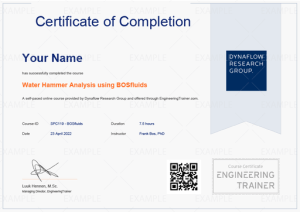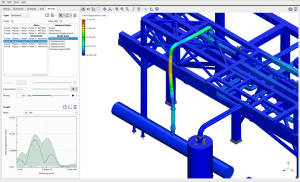- Outline of latest info on the state of SIFs, k-factors, and SSIs.
- SIF/k/SSI changes and the impact on bends – and how they affect the pipe stress
- Collapse of straight pipe and desired changes
- Impact of pressure on SIFs and the contradictory results given by different solution methods in VIII-2 Part 5
- Optimizing Workflow and the pipe stress design process
- Allowable loads on pipe shoes – what affects allowable loads and how are they automatically reviewed
- API 661 header boxes, or rectangular constructions with nozzles attached.
- SIFs, k’s, SSIs, and allowable loads for all types of vessel connections.
- Multiple outputs and comparing results from any number of CAESAR model calculations.
- Other Tools and Approaches (i.e. laser scanning, POD, AIV)
This course is scheduled over 2 work days. Course dates are organized upon inquiry.
This course is available in classroom formats.
Prerequisites and level
- Intermediate proficiency in the use of CAESAR II
- Level: Intermediate
Intended For
This course is designed for:
- Intermediate and advanced CAESAR II users
- Those looking for improved accuracy for critical systems
- Those wanting to stay on top of B31 code developments
- Owners of FEA Tools
- Those combining 3-D FEA with piping models
The classroom course is performed in person either on-site or in the Dynaflow Research Group office located in Rijswijk, The Netherlands. This course enables you to be face-to-face with the instructors with live examples provided. This course also provides all participants with a 1-year access to the self-paced course.
Exercises & software models associated with the content are available for download.
Participants of the classroom course receive a personal physical certificate upon the completion of the course.
Example certificate:

After this course, participants are expected to:
- Learn how to use the recently released FEATools software
- Staying on top of the latest developments in piping stress
- Gain a better understanding of the critical aspects of piping systems.
- Learn to see if an overstressed location is only a theoretical issue due to inaccurate SIFs and k’s
- Lots of examples and tutorials to gain proficiency




